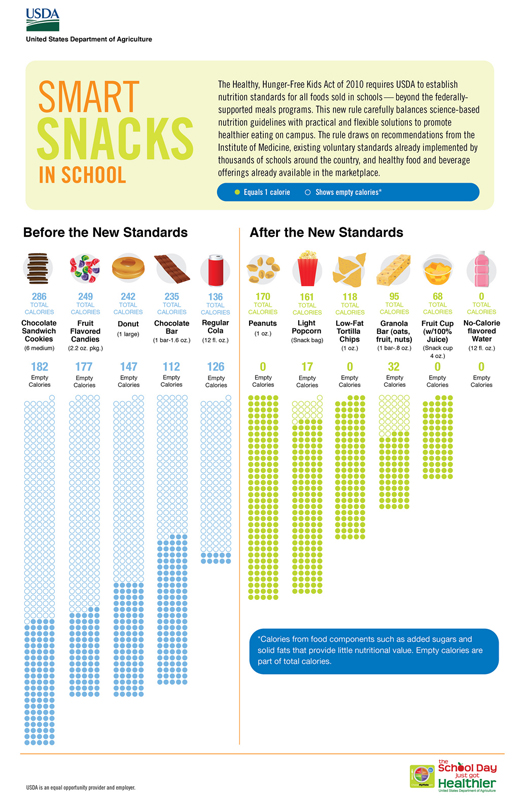Beginning next year, fruits and other healthy foods will replace candy bars and cans of soda in school vending machines thanks to new U.S. Department of Agriculture (USDA) nutritional requirements announced last month.
The Smart Snacks in School requirements, the first major overhaul of its kind in three decades, place tighter restrictions on so-called competitive foods — items served in school stores or vending machines — in elementary, middle and high schools. Under the new standards, competitive foods must meet certain nutritional standards or they cannot be offered to schoolchildren.
“The link between poor diet and health problems, such as childhood obesity, is a matter of policy concern because the associated health problems produce significant social costs,” the USDA’s interim final rule says. “The primary purpose of the rule is to ensure that foods sold in competition with school meals, competitive foods, are consistent with the most recent Dietary Guidelines, effectively holding competitive foods to the same standards as other foods sold at school during the school day.”
The new standards are expanded from 2010’s Healthy, Hunger-Free Kids Act, which created new requirements for foods served under the National School Lunch Program. However, the new requirements do not apply to foods sold as part of school meal programs, such as cafeteria-bought breakfasts or lunches. Also not affected are foods brought from home by students and food used in fundraisers like school bake sales
Foods made from grains are required to consist of 50 percent whole grain by weight or else contain whole grain as the first ingredient. Non-grain items must contain fruit, vegetable, dairy or protein as the first ingredient. Additionally, foods will no longer be allowed to contain trans fats or more than 35 percent total calories from fat per item.
Infographic courtesy USDAGov / Flikr































